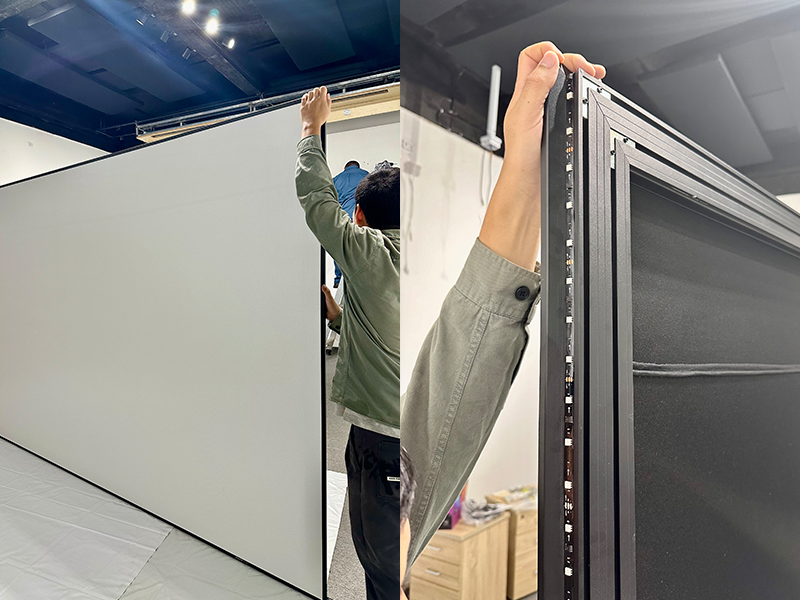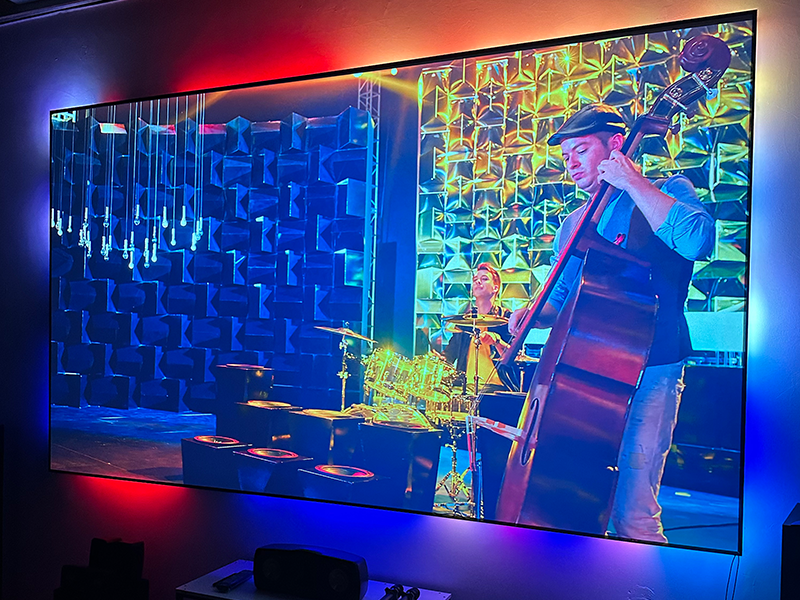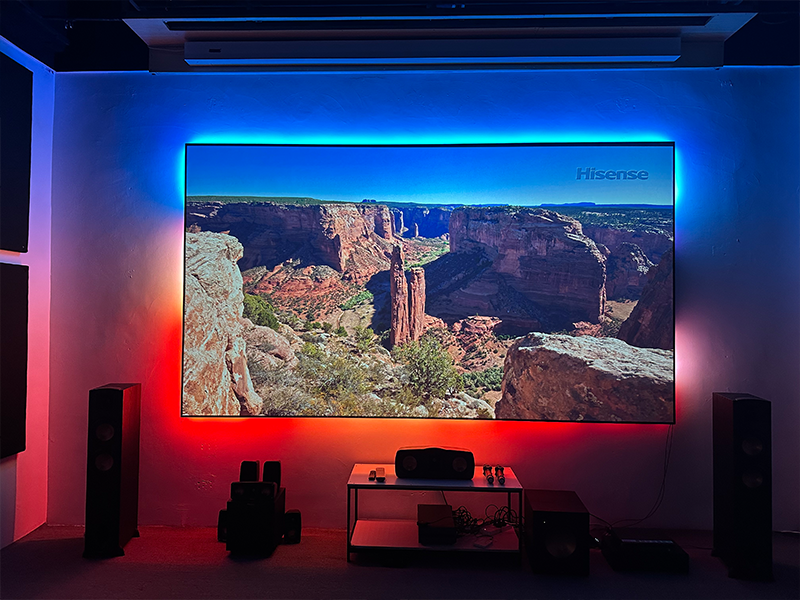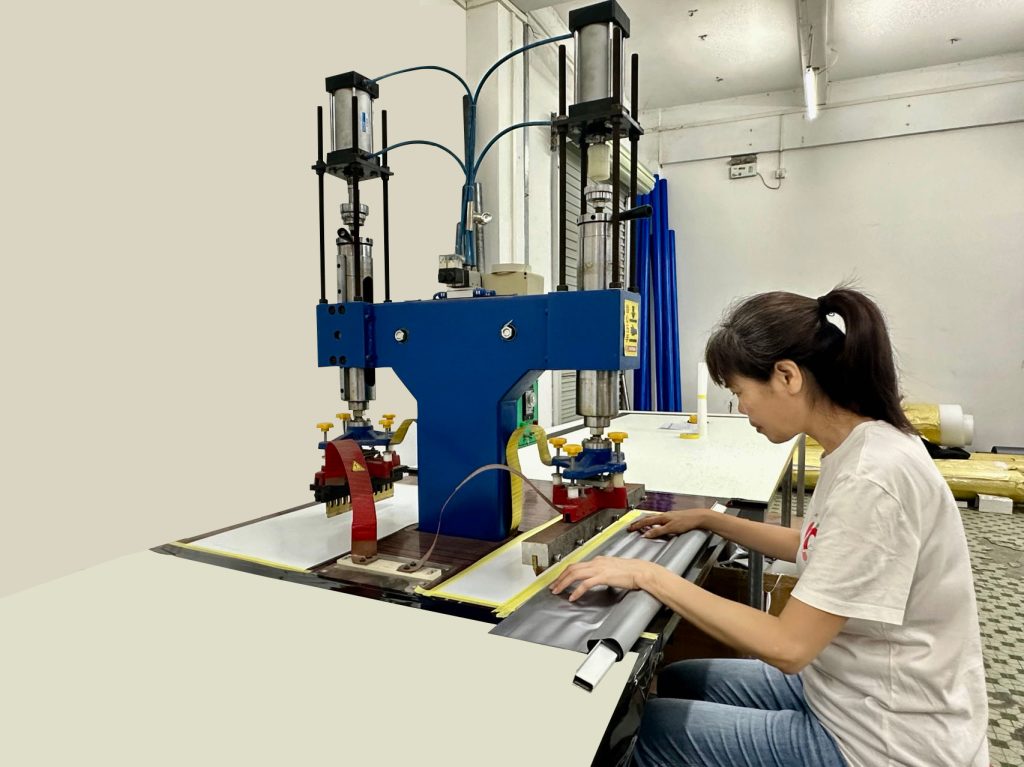
You’re watching a cartoon with your kid in the living room on a weekend, and sunlight filters through the curtains—suddenly the image on the white wall turns gray, and the character’s hair becomes blurry. Or in a meeting room, colleagues sitting on the side keep complaining that the chart colors are distorted. Have you ever experienced such awkward moments? Data in 2025 shows that China’s annual output of projection screens has reached 11.143 million pieces, and more people are realizing: A good projector needs a good screen as a “partner”—screens are by no means dispensable accessories.
1. Can White Walls Really Replace Screens?
Many people think, “Projecting onto a white wall is fine; screens are a waste of money.” But practical tests tell a different story: In the same environment, a 1000 CVIA lumens projector produces an image brightness of about 8 fL on a white wall, while on a fiberglass screen (gain 1.2), the brightness reaches 12 fL, with 40% more detail retained in dark areas. More importantly, the rough surface of white walls scatters light, wasting the delicate image quality of 4K projectors, whereas the precise optical structure of screens can accurately restore image details.
2. 4 Core Functions of Screens—Now You’ll Understand Why They’re Essential
1. Resolution “Amplifier”: No More Mosaic Images
A screen’s resolution refers to the size of its smallest surface optical structures—a feature white walls completely lack. By 2025, mainstream projectors have generally reached 4K resolution (3840×2160 physical resolution). Pairing one with a low-resolution screen is like framing a high-definition painting on blurry canvas.
- Key Principle: Screen resolution must be significantly higher than the projector’s. For example, a 4K projector should be paired with an 8K-compatible screen to display the delicate shadow details in the nuclear explosion scene of Oppenheimer.
- Common Myth: Ordinary white plastic screens, though their optical structures are invisible to the naked eye, only support 1080P resolution and cannot adapt to 4K devices.
2. Viewing Angle “Adjuster”: Everyone Enjoys the View
Viewing angle refers to the visible range when image brightness drops to 50% of the center level, directly determining the multi-person viewing experience. The shape of the screen’s optical structure dictates the viewing angle:
- Fiberglass and white plastic screens offer viewing angles over 160°, ideal for family living rooms or meeting room presentations—people sitting on the side can still clearly see text and charts;
- High-gain metal screens have a viewing angle of only 45°, better suited for single-person home theaters.
Improving viewing angles is technically more challenging than optimizing resolution. High-quality screens maintain brightness uniformity and color accuracy even at wide angles.
3. Brightness “Balancer”: The Weapon Against Ambient Light
Brightness gain is the ratio of a screen’s reflected brightness to a white wall’s. The formula “Screen Gain × Projector Brightness = Actual Image Brightness” quickly determines compatibility. Common screen gain ranges in 2025 are:
| Screen Type | Gain Range | Applicable Scenarios | Notes |
|---|---|---|---|
| White Plastic | 0.9-1.1 | Bedrooms, outdoor camping | Wide angle but weak light resistance |
| Fiberglass | 1.1-1.3 | Home living rooms, small meeting rooms | Cost-effective, accounts for 60% of mid-low market |
| Fresnel Anti-glare | 1.8-2.0 | Bright living rooms, laser TVs | Reduces 98% ambient light, boosts light utilization by 30% |
| Metal | ~3.5 | Low-lumen mini projectors | Narrow angle, slightly poor color reproduction |
Core Rule: Gain and viewing angle are inversely proportional. High-gain screens boost brightness but sacrifice side viewing—choose based on your scenario.
4. Contrast “Enhancer”: Sharper Blacks and Whites
Good contrast ensures “stars don’t disappear and night skies don’t turn gray” in night scenes. Screens enhance contrast through two core technologies:
- Reducing Emissivity: Gray screens use special coatings to reduce ambient light reflection; though gain drops to 0.9, contrast increases by over 20%;
- Directional Reflection: The concentric optical structure of Fresnel screens “filters” stray light, reflecting only projection light toward viewers for purer blacks.


3. 90% of People Get These Screen Facts Wrong
Q1: How much should I spend on a screen for a 3000-yuan projector?
A: Allocate 10% of the projector’s value—around 300 yuan for a fiberglass screen. It maximizes device performance without waste.
Q2: Are more expensive anti-glare screens better?
A: Not necessarily. “Fake anti-glare screens” under 500 yuan only have gray paint, with gains as low as 0.3-0.5 that darken images. Real anti-glare screens rely on Fresnel or black grid structures, usually costing over 1,000 yuan.
Q3: Is a larger screen always better for viewing?
A: For homes, calculate by “wall width minus 1.5 meters.” 80-120 inches is mainstream. Oversized screens force too-close viewing, causing eye strain.
4. 2025 Buying Guide: Custom Screens Fit Better
With consumption upgrading, demand for custom screens is growing rapidly. These scenarios especially benefit from customization:
- Irregular spaces: Attics or curved walls need custom sizes and shapes;
- Professional needs: Home theaters can use acoustic transparent screens with hidden speakers;
- Commercial scenes: Exhibition halls can add logos to screens for both utility and promotion.
Conclusion: A projector’s image potential is unlocked by its screen. Upgrading your 2025 projection experience starts with choosing (or customizing) the right screen.


